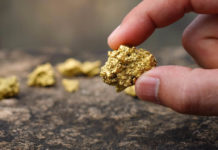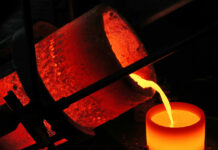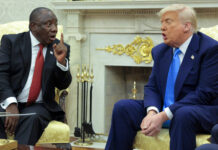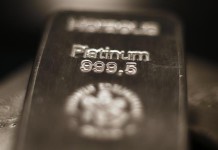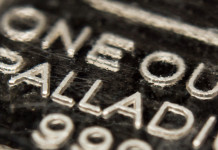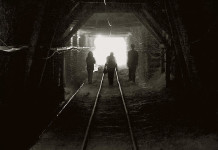
[miningmx.com] — AQUARIUS Platinum’s earlier warning that its interim
figures would be less than flattering has done little to prepare the market for the
severity of regulatory and operational predicaments it was facing, with the share
falling more than 5% on Thursday.
For every unit of platinum group metals that Aquarius sold during the six months to
end-December at an average price of $1,171 per ounce, it incurred costs of
$1,093/oz. This represented a decrease in gross margin to 6.2% from 36.5% a year
earlier.
Most issues affecting Aquarius operations were raised in a production report released
last week Tuesday. At the time, the share lost 8% in value in one day. It has since
recovered slightly, but has again depreciated 5.49% on Thursday, to be trading at
R19.10. The share has now dropped 12.7% since the release of the production
update, from R21.90 at the close of trading on January 30 to R19.10.
CEO Stuart Murray again minced no words in explaining Aquarius’s current state.
“At our results for the comparative period ended December 2010 I said we were
through the worst, and thought the bottom was behind us in this sector. I could not
have been more wrong,’ Murray said.
“Our financial results . do no more than reflect the ongoing difficult operating and
trading conditions facing the company and the southern African platinum industry.
“They should come as no surprise to shareholders and observers of this space.’
He said that although the operations generated modest cash flow, it was not enough
to cover replacement capital; meaning that acquisitions and growth capex had to be
funded from cash resources.
In South Africa, widespread Section 54 safety stoppages and permitting delays were
affecting Aquarius, Murray said, while in Zimbabwe increased royalties and mineral
lease or ground rent charges were damaging Mimosa.
“In addition, the indigenisation process remains ongoing and its outcome uncertain,’
Murray said. “Our management continues to engage the appropriate departments of
the governments of both jurisdictions in order to mitigate these impacts and
safeguard our business as best we can.’
Murray also again alluded to its dissatisfaction with the performance of its primary
mining contractor, Murray & Roberts.
“Many of the problems relating to the implementation of the new hanging wall
support methodology at Kroondal and Marikana were resolved, but ongoing below
budget production performance, poor grade control and poor cost control culminated
in significant unit cost escalations at Kroondal, Marikana and Everest,’ Murray said.
“This has lead Aquarius to commence with a thorough review of the current
contractual arrangements with its primary mining contractor, Murray & Roberts
Cementation. The current cost-reimbursable contractual arrangement has become
untenable, and is expected to be changed or be replaced by the end of the third
quarter.’
Other key figures put forward by the company included a revenue decrease of 25%
to $252m, a decrease in mine operating net cash flow of 53% to $25m, as well as a
14% decrease in production to 215,453 PGM ounces.
Aquarius has revised its guidance for the full year to 440,000 PGM ounces, down
from an original 545,000 to 560,000 ounces.
Commenting on the results, Numis Securities’ Andy Davidson said that despite
Murray’s “well-founded’ sentiments about the southern African platinum sector, the
higher costs were worse than consensus.
“These results are likely to disappoint,’ he said.



